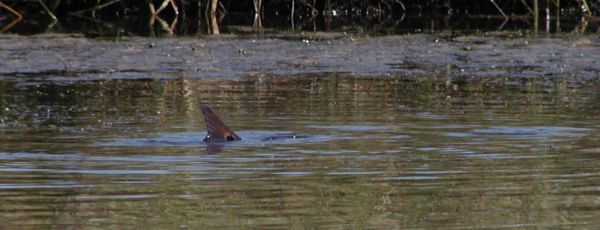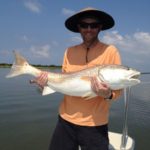
Redzilla invasion of marshes has begun
On Saturday, Aug. 18, folks in kayaks will inundate Caminada Pass in Grand Isle for the “Ride the Bull 3” extreme kayak fishing tournament. Mike LaFleur plans to be there, hoping for different results this year in the Fly Division.
“Last year, on the afternoon before the tournament, about 20 of us went out into the pass and 15 of us caught fish,” he said. “I landed a 32-inch red on a large clouser minnow using an intermediate sinking line. I felt pretty good that our group (fly fishers) would weigh in a few fish.”
As it turned out, Mike should’ve curbed his enthusiasm. Not a single fly-rodder caught a red. Not that the bait chunkers did any better: Of the 170 participants, only 16 landed a redfish.
When a bull red turns his nose up at cut bait, live mullet, live shrimp, cracked crab and live pogey, what chance does a fly have?
Fortunately, such days are the exception.
If you’re a longtime visitor to LouisianaSportsman.com, you’ve probably seen the photos posted in the forum each August and September, of enormous numbers of big reds congregating off our coast.
The multitudes of reds that invade the beaches and passes to undertake their spawning ritual make easy targets for fly-casters. The fish’s feeding frenzies have become known as the “Redfish Blitz.” At those times, just about any fly will do. Heck, a bare hook will do.
For the vast majority of fly-rodders, it’s not the fish in the passes that are prime targets but the small percentage of those mature fish that migrate into the marsh to overwinter. And to overspring.
At one time, catching a redfish over 15 pounds in the marsh was enough to create buzz for weeks. Today, it’s as common as Kardashian women getting new boyfriends.
So what changed? No one is quite sure.
But no one is complaining. Certainly not Conway Bowman. The host of the popular television series “Fly Fishing the World” holds the Louisiana state record of 41.62 pounds caught out of Hopedale with guide Capt. Gregg Arnold. It’s also the IGFA world record in the 20-pound tippet category.
Sight-casting in skinny water to a fish of such size that it’s exposed back and tail are in different zip codes, makes for an experience you never forget.
My personal best redzilla was 19 pounds, landed from a kayak near Leeville and caught on a seaducer.
However, on two occasions I’ve had much bigger fish on. One of them — we estimated between 30 and 40 pounds — ate a large popper. His giant head came completely out the water to eat it. After a 45-minute fight, he broke off on a crab trap.
I had a friend catch a 23-pounder out of Pointe-aux-Chenes, some 30 miles from the Gulf. The redzilla ate a size 6 crystal shrimp, proving these big fish don’t always require big, bulky flies. He was going to enter it on the Louisiana Outdoor Writers Association Fly Rod Record list; It wasn’t big enough to even make the top 10.
The common belief is that, come spring, these giants move out of the marsh and into the Gulf. Not all do. Just ask Mickey Brown.
Earlier this summer, Brown was fishing with Capt. Alec Griffin in an area just east of Hopedale.
“It was a perfect day weather-wise — clear skies, no wind — but it was hot,” he said. “We were fishing oyster beds and marsh grass, picking up 7-pound reds left and right. Alec was poling when we saw a big commotion, like big fish busting bait. We poled over and saw a couple of bull reds, but they spooked before I could get a good cast on them.
“We then up-sized flies and started slowly working the area. I saw a bull slowly rise in the water column, cast to him and before he saw it another one inhaled the fly, and the fight was on. This was the first bull red I had hooked on a fly rod, and at first it seemed that he didn’t know he was hooked. When he figured it out, things got more interesting. Twenty-five minutes later, after several strong runs and a near disaster with an oyster-bed marker, Alec slid him into the net.”
I asked Griffin if he subscribed to the theory that redzillas were more common in the fall and winter following an active storm season in the Gulf.
“There doesn’t seem to be a set pattern,” he said. “Two years ago, we didn’t have any storms, and that September was absolutely unbelievable for numbers of big fish. Then came November — the start of peak flats fishing — and most of the fish had disappeared.”
But as Griffin was quick to point out, there’s always some big fish around. And that’s good news for fly anglers looking to put their 9-weights, 10-weights or even heavier tackle to use.
Capt. Alec Griffin is one of several outstanding resident Louisiana fly fishing guides. He can be reached at 504-430-4222.


